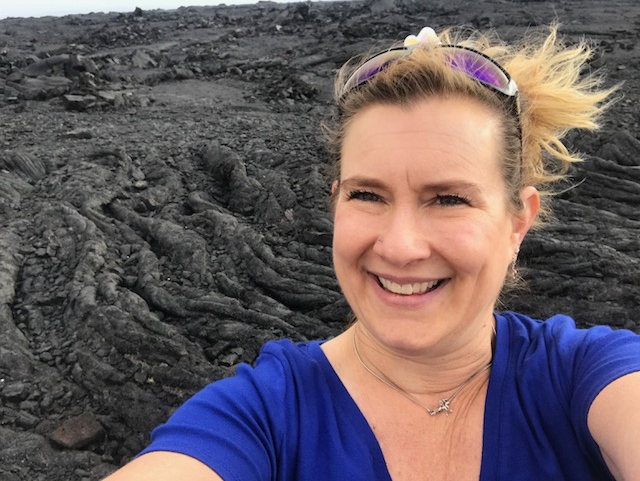Scaffolding the Practice of Asking Questions and Defining Problems
By Cindy Workosky
Posted on 2018-09-25
With the adoption of the Next Generation Science Standards (NGSS), teachers are wondering how to teach their students to do the science and engineering practices (SEPs). Some SEPs, such as carrying out investigations and analyzing data, are a natural flow from the old science standards. Many, however, are new for both students and teachers. For example, the practice of asking questions and defining problems is something we have not required our students to do before: the questions or problems were already asked or defined for the students to answer. How can we move both our own practice, as well as our students’ thinking, from the canned version of questions and problems to asking their own thoughtful questions about a phenomenon, and defining problems based on a scenario?
As teachers, many of us may believe we need students to be proficient at this skill immediately! But realistically, we need to move slowly when teaching them these new skills so that students can move toward proficiency over time. NGSS implementation will not happen overnight, nor will teachers and students excel at these new skills without ongoing learning and practice. So how do we give students the practice that they need? And what can we do to help them learn these new skills effectively?
Initially, teachers will need to learn the skills required by the SEPs, if they have no experience with them. Training to help teachers learn about the pedagogical shifts required with NGSS implementation is available from NSTA and state science teacher organizations. Once teachers have some experience with these new skills, they can start teaching them to their students. Teachers can leverage their own experiences in practicing and learning the new SEP skills, using similar practices with students that they experienced as learners.
In my classroom, I have used several different methods to help students acquire the skill of asking questions and defining problems. One method I use with my first-year biology students is to scaffold the process for them and provide tools to help them develop their skills. Some scaffolds I have used include modeling the practice, using sentence frames, and asking them guiding questions to lead them to developing their own questions.
For example, at the start of the year, I ask many questions about a phenomenon, modelling good questioning practices. After a while, I start asking the students questions like these: What do you wonder about this? What questions do you still have? What could you do to find out more about this? These questions help focus students on what they still need to answer to solve the problem and help them begin asking their own questions.
Sentence frames—providing students with a few sentence stems to help them begin to generate their own questions—are often helpful. You can generate some stems of your own for each SEP, or use some questions that focus on a given crosscutting concept (CCC). For example, in biology, we are studying ecosystems, so I can prompt with these questions: What are the system’s boundaries? Or how might energy and/or matter flow within this system?
These prompts can help students formulate additional questions to further explore the phenomenon they’re investigating. What other methods might you use to help students become proficient with the SEPs and CCCs?
 Heather A. Wygant has been teaching secondary science for 21 years, primarily in high school. She has taught biology, geology, physics, chemistry, oceanography, and AP Environmental Science. She also served as a Teacher on Special Assignment for science and math and helped her district implement the NGSS over the past three years. Now back in the classroom, she is continuing NGSS implementation. Wygant holds bachelor’s and master’s degrees in geosciences and a second master’s degree in science education.She is currently pursuing a PhD in Curriculum and Instruction STEM, with a research focus on NGSS implementation.
Heather A. Wygant has been teaching secondary science for 21 years, primarily in high school. She has taught biology, geology, physics, chemistry, oceanography, and AP Environmental Science. She also served as a Teacher on Special Assignment for science and math and helped her district implement the NGSS over the past three years. Now back in the classroom, she is continuing NGSS implementation. Wygant holds bachelor’s and master’s degrees in geosciences and a second master’s degree in science education.She is currently pursuing a PhD in Curriculum and Instruction STEM, with a research focus on NGSS implementation.
This article was featured in the September issue of Next Gen Navigator, a monthly e-newsletter from NSTA delivering information, insights, resources, and professional learning opportunities for science educators by science educators on the Next Generation Science Standards and three-dimensional instruction. Click here to sign up to receive the Navigator every month.
Visit NSTA’s NGSS@NSTA Hub for hundreds of vetted classroom resources, professional learning opportunities, publications, ebooks and more; connect with your teacher colleagues on the NGSS listservs (members can sign up here); and join us for discussions around NGSS at an upcoming conference.
The mission of NSTA is to promote excellence and innovation in science teaching and learning for all.
Future NSTA Conferences
2018 Area Conferences
2019 National Conference
Follow NSTA
Disclaimer: The views expressed in this blog post are those of the author(s) and do not necessarily reflect the official position of the National Science Teaching Association (NSTA).
NGSS Science and Engineering Practices Middle School Elementary


